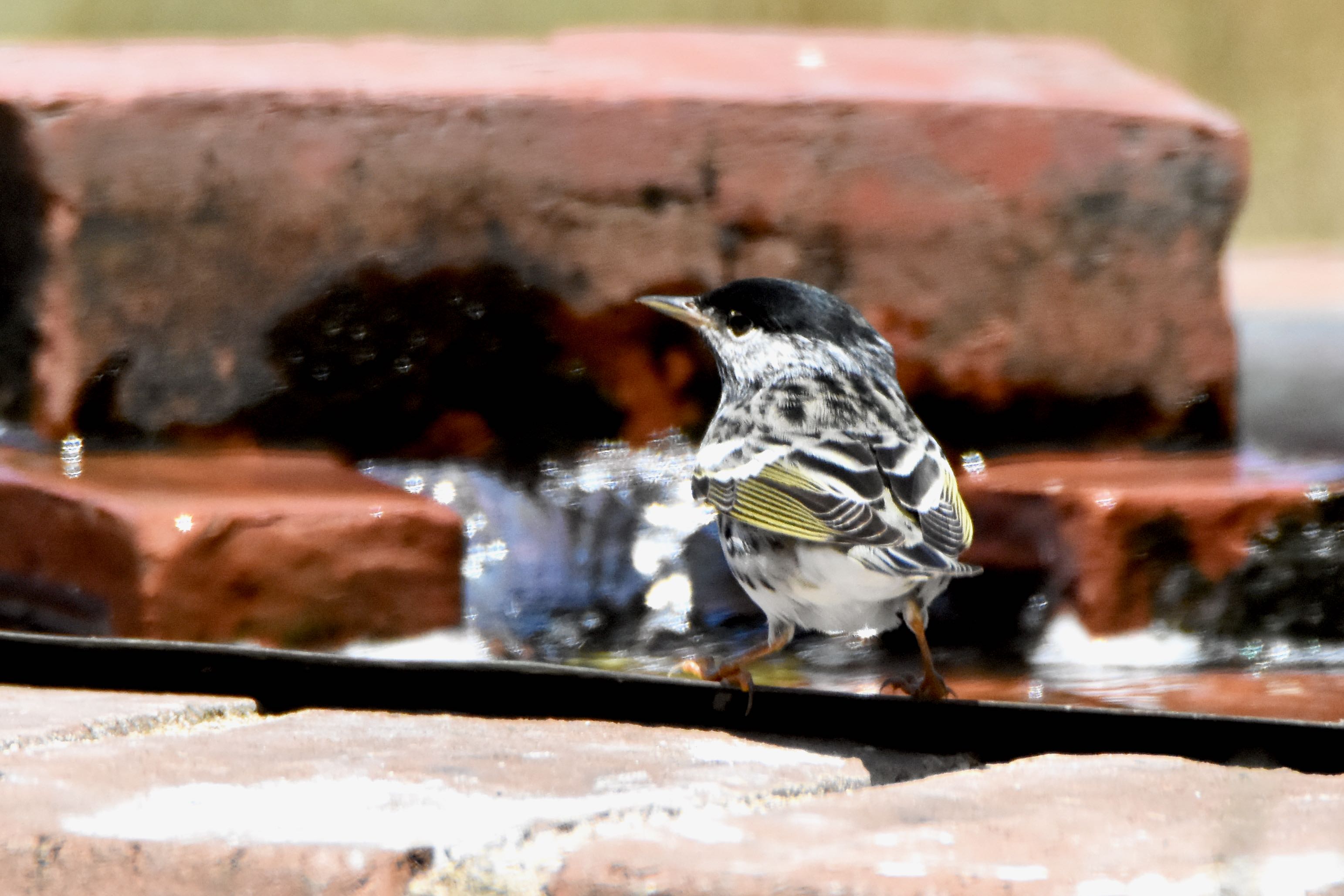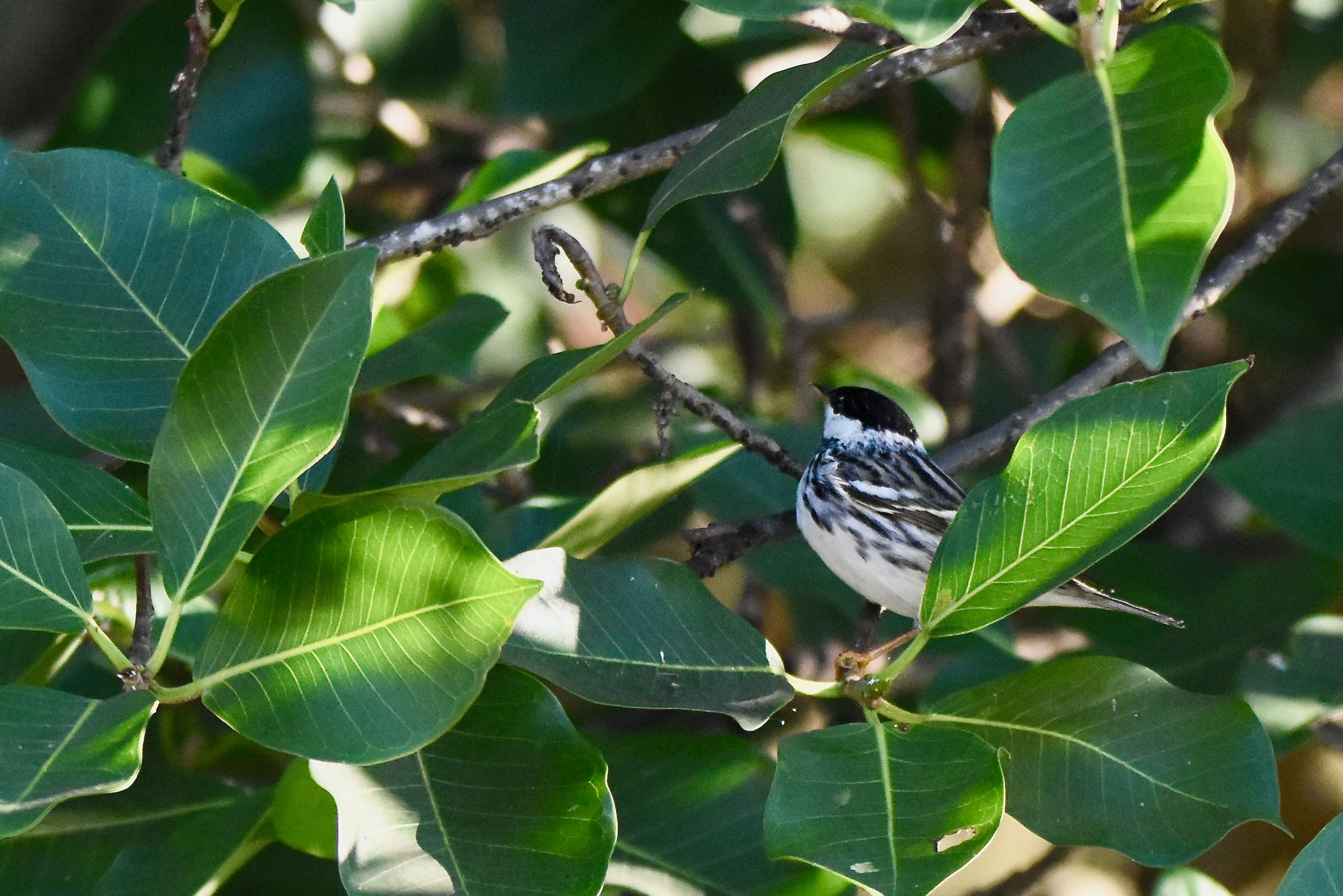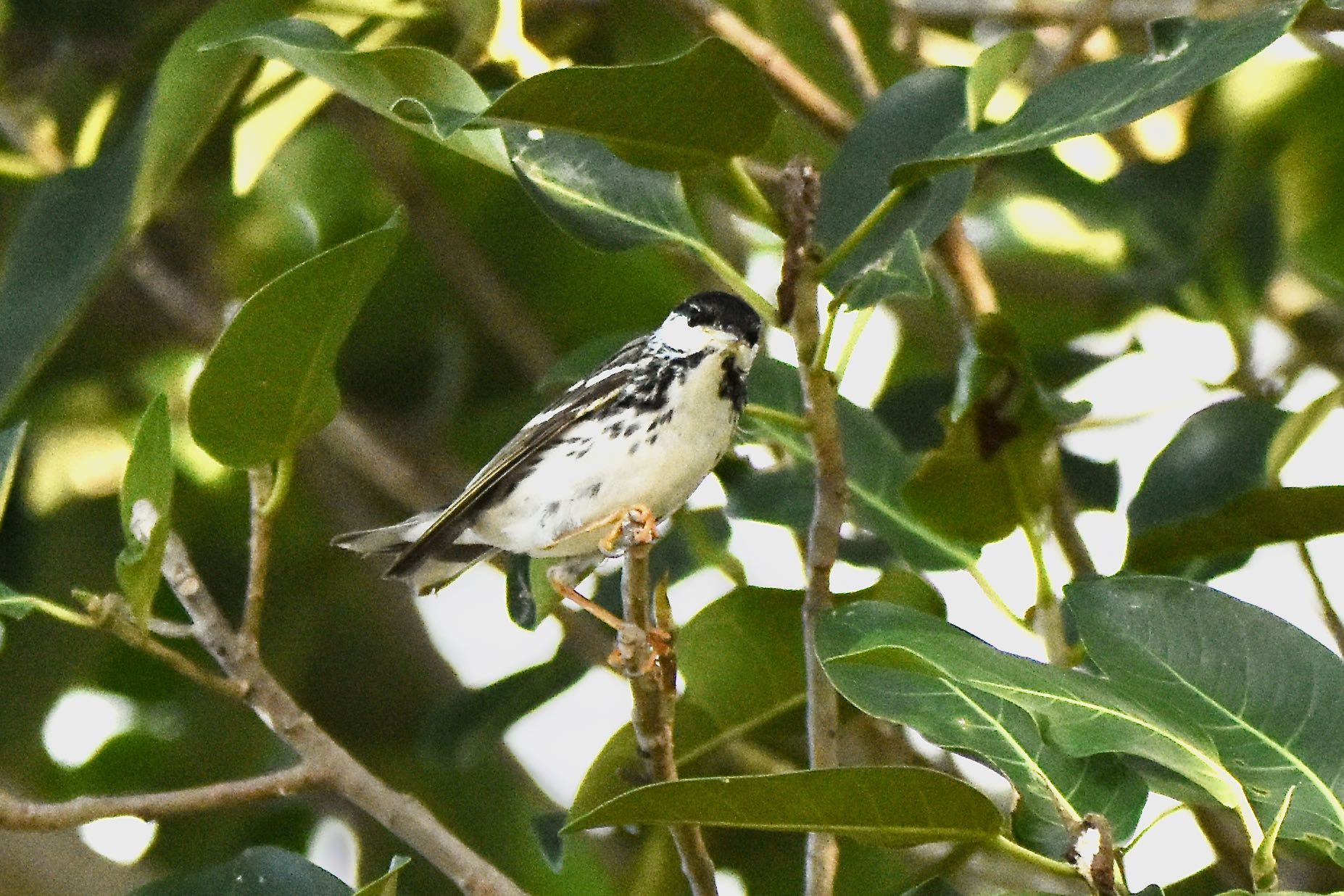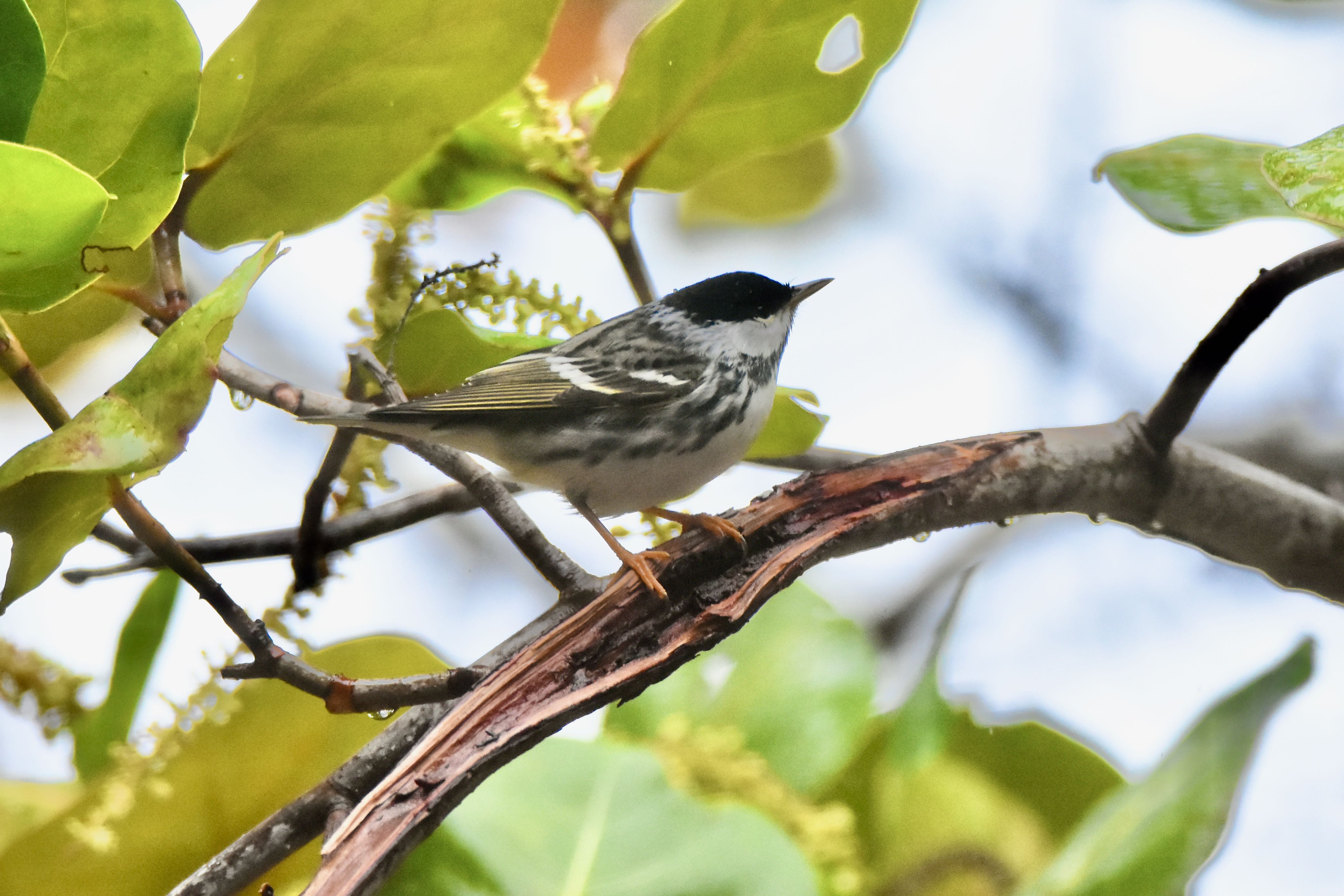
Blackpoll warbler, photographed at Garden Key, Dry Tortugas National Park, Monroe county, in April 2017.
At first glance, you might think this black and white warbler is a black-and-white warbler. As in Mniotilta varia.
But a closer look will tell you that this little guy is a blackpoll warbler, Setophaga striata. The difference between the two warbler cousins comes down to two easily spotted physical characteristics — the blackpoll's solid black "skull cap" that extends to the eyes, and its bright orange legs. The black-and-white has a wide white line above the eye and its legs are dull.
The blackpoll is also a migratory visitor to South Florida. It only makes pit stops here on its way to someplace else — almost always in spring — while the black-and-white winters here.
And the blackpoll is one astounding migrator. There are birds that make longer migratory trips but few rival the way this one travels.
Blackpolls spend the summer breeding season in the north woods of Canada and Alaska, occasionally as far south as New England. Their preferred habitat is spruce forests, and thickets in places so far north that trees won't grow. In the fall, they move to the coast to begin the annual trip to South America. Some will take a break in Bermuda (and a few have been seen in Florida) but most make a nonstop flight of three or four days between the North Atlantic coastline and the Caribbean — nearly 2,000 miles. Their ultimate destination: the tropical forests of Colombia, Venezuela and Brazil. The secret to their marathon flight: they double their weight during summer, and take advantage of a shift in the prevailing winds.
Their trip back north is taken at a more leisurely pace that brings them to South Florida, as well as much of the eastern and central United States.
The blackpolls photographed on this page lingered a couple of days on Garden Key in Dry Tortugas National Park and in the woods surrounding the Green Cay Nature Center in Boynton Beach before resuming their northward journey.
Blackpolls are fairly large as warblers go, with a body that's between five and six inches long and a wingspan that can exceed nine inches. Breeding males are sharp blacks and whites above and mostly white below. As noted above, they have a solid black patch on the head, down to the eyes, and bright orange legs. Breeding females are gray-green, with black streaks on the head and back. Nonbreeding males lack the black skull caps.
Their diet is bugs and berries — the birds in the second and third photos were in a fig tree at Green Cay Nature Center, most likely feasting on the fruit. They forage by creeping through trees, picking insects off the leaves, branches and bark. They'll also dart out to grab flying insects.
Blackpolls usually have one brood a season, but can have a second. There are four or five eggs per clutch, which the female incubates for about 12 days. While mom sits, dad brings her food. Once hatched, the young stay nest-bound for about 12 more days, during which they're fed by both parents.
Blackpolls are common warblers but their numbers are declining, with loss of habitat, especially in South America, the biggest threat. They are members of Parulidae, the wood warbler family.
Dry Tortugas National Park



